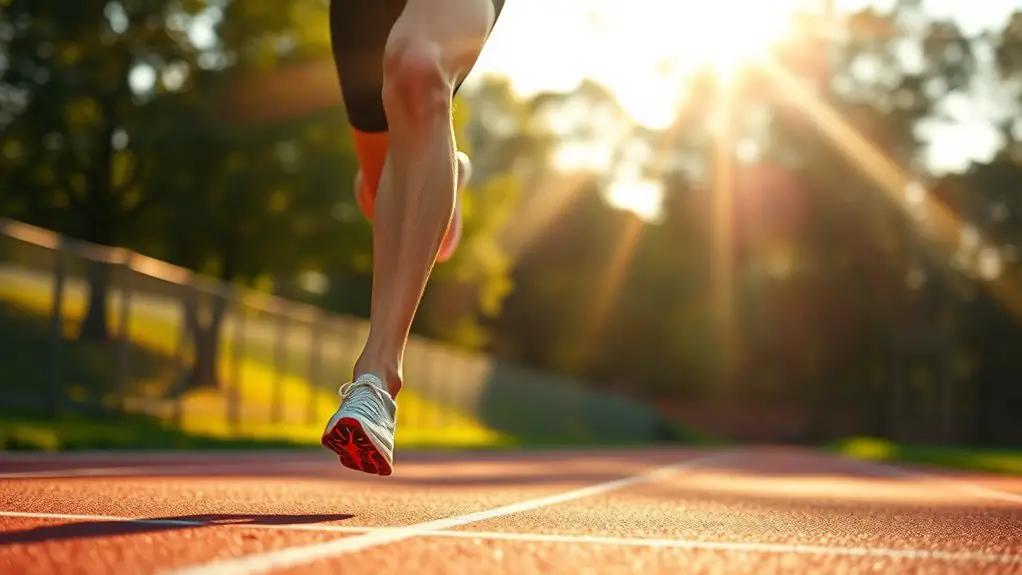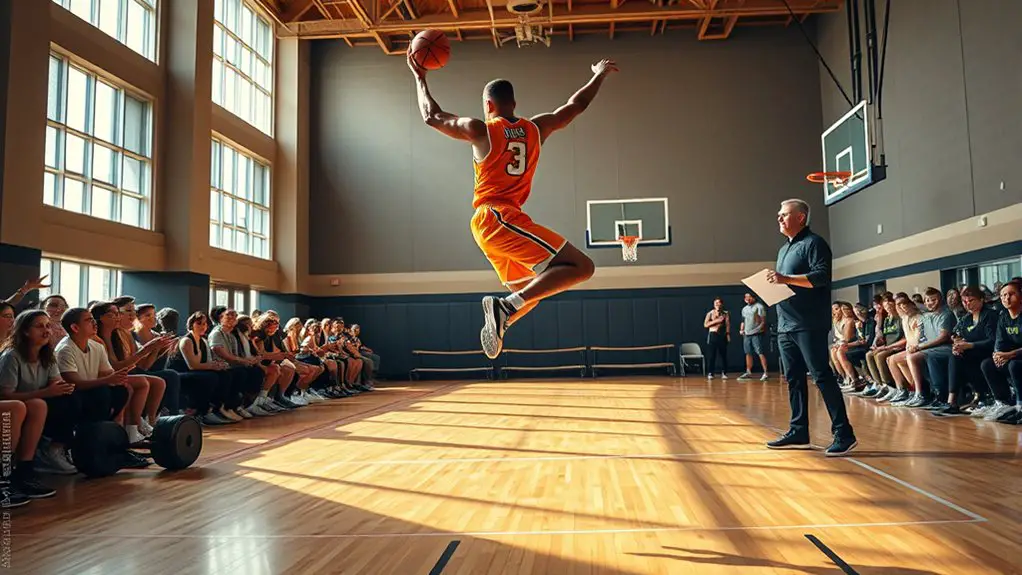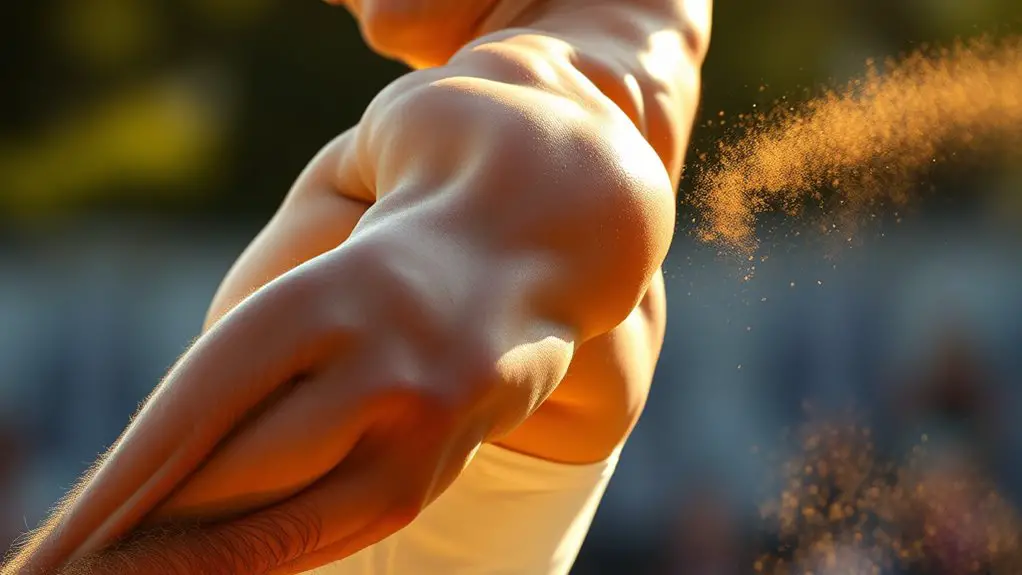Cadence is essential for your running performance. A higher cadence improves efficiency, energy conservation, and reduces joint impact. It promotes shorter, quicker strides, enhancing your form and posture. By finding the right rhythm, you can decrease your risk of injury and maintain a consistent pace. Optimizing your cadence can lead to a more exhilarating run with less fatigue. If you're curious about how to analyze and improve your cadence, there's more to explore on this topic.
Understanding Cadence: What It Is and Why It Matters
Cadence, often described as the rhythm of your running, is an essential factor that can greatly impact your performance. It refers to the number of steps you take per minute, and finding your ideal cadence can open up a new level of freedom on the road. When you're in sync with your natural rhythm, running feels effortless, almost like dancing with the pavement. A higher cadence often means shorter strides, which can help reduce the risk of injury and enhance your overall experience. By paying attention to your cadence, you can discover what feels right for you, allowing for a more liberating and enjoyable run. So, embrace your unique rhythm and let it guide you towards achieving your running goals.
The Relationship Between Cadence and Running Efficiency
When you find that sweet spot in your step rate, running efficiency can greatly improve. A well-tuned cadence helps you conserve energy, allowing you to run longer and enjoy the journey. It's all about that rhythm; when you hit your ideal pace, everything feels natural and effortless.
- You'll reduce the impact on your joints, minimizing wear and tear.
- A higher cadence often leads to quicker foot strikes, promoting a lighter feel on the ground.
- Increased efficiency means less fatigue, letting you explore new routes without feeling drained.
Embrace the freedom that comes with an optimized cadence, and watch your running transform into a more exhilarating experience. Find your rhythm and let it carry you forward!
How Cadence Affects Running Form
As you find your ideal cadence, you'll notice a significant impact on your running form. A higher cadence often leads to shorter, quicker strides, which can help you stay light on your feet. This not only enhances your overall speed but also encourages a more natural posture. You might find that your hips align better, and your arms swing more freely, allowing you to run with less tension. On the other hand, a lower cadence can cause overstriding, which can disrupt your balance and efficiency. By tuning into your rhythm, you'll feel more connected to the ground, promoting a fluid motion that embraces your body's natural abilities. Ultimately, finding that sweet spot in cadence can liberate your running experience.
The Impact of Cadence on Injury Risk
Finding the right cadence can greatly reduce your risk of injury while running. When you maintain an ideal cadence, you can improve your form and minimize the impact on your joints. Here are some benefits of finding that sweet spot:
Finding your ideal running cadence can enhance your form and significantly lower your risk of joint injuries.
- Reduced Strain: A higher cadence often leads to shorter strides, which can decrease the stress on your knees and hips.
- Improved Shock Absorption: Shorter, quicker steps can enhance your body's natural shock absorption, helping to prevent injuries.
- Better Overall Efficiency: A consistent cadence can help you maintain a steady pace, reducing fatigue and the likelihood of overexertion.
Analyzing Your Current Cadence: Tools and Techniques
Understanding your current cadence is essential for enhancing your running performance. To analyze it accurately, you can use various tools and techniques. A simple stopwatch can help you measure the number of steps you take in a minute; just count your steps for 30 seconds and multiply by two. Many running apps and GPS watches also provide cadence data, making it easier to track your progress over time. If you prefer a more hands-on approach, consider using a metronome to find your ideal rhythm. Additionally, recording your runs can help you visually assess your cadence patterns. By employing these methods, you'll gain valuable insights into your running style, empowering you to make informed decisions that align with your freedom to run efficiently.
Strategies for Improving Your Cadence
Once you've analyzed your current cadence, it's time to implement strategies for improvement. Embracing changes can boost your performance and enhance your running experience. Here are some effective ways to elevate your cadence:
- Shorten your stride: Focus on taking shorter, quicker steps rather than long strides. This helps maintain a faster cadence without exhausting yourself.
- Use a metronome: Set a metronome or a cadence app to your target rhythm. This auditory cue can help you stay in sync and find your flow.
- Practice drills: Incorporate drills like high knees or butt kicks into your routine. These exercises promote quicker leg turnover and improve overall efficiency.
Monitoring Progress and Making Adjustments
As you work on improving your cadence, it's crucial to monitor your progress regularly and make necessary adjustments. This not only keeps you on track but also guarantees you're enjoying the journey. Check your stats, listen to your body, and tweak your training as needed.
| Week | Cadence (spm) | Notes |
|---|---|---|
| 1 | 160 | Starting point |
| 2 | 165 | Felt more comfortable |
| 3 | 170 | Increased endurance levels |
Frequently Asked Questions
How Does Cadence Vary Between Different Types of Running Surfaces?
Ever wonder how your cadence shifts on different surfaces? You'll find it varies; softer ground might slow you down, while hard pavement could speed you up. Experiment and discover what feels right for your running style!
Can Cadence Affect My Mental State While Running?
Absolutely, your cadence can influence your mental state while running. A steady rhythm can create a calming effect, helping you focus and enjoy the experience, while varying it can keep your mind engaged and energized.
What Role Does Cadence Play in Sprinting Versus Long-Distance Running?
Cadence influences your speed and efficiency differently in sprinting and long-distance running. In sprints, quicker strides help maximize power, while in long distances, a steadier, controlled cadence supports endurance and reduces fatigue over time.
Are There Specific Shoes That Promote Better Running Cadence?
When you lace up specific running shoes, like those designed with a lightweight feel and responsive cushioning, you'll notice improved agility. They can enhance your natural rhythm, helping you find that sweet spot in your cadence effortlessly.
How Does Age Influence Optimal Running Cadence?
Age affects your ideal running cadence by influencing muscle elasticity and recovery. As you age, you might find a slightly slower cadence comfortable, but it's crucial to listen to your body and adjust accordingly.




